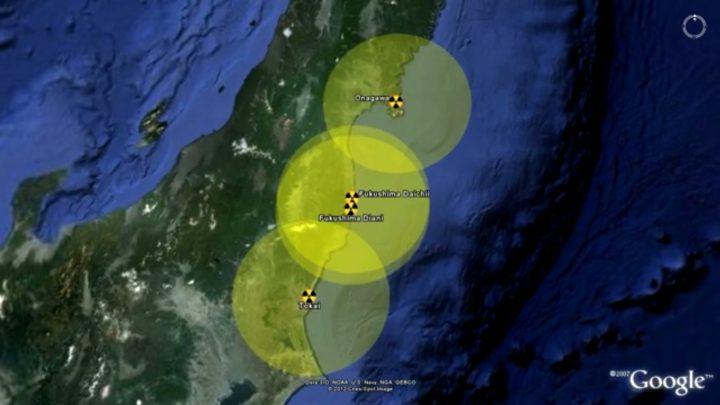Here we reproduce the lastest information video from Fairewinds Energy Education in which Arnie Gundersen explains that but for lucky timing with the tsunami hitting while all the stations on the Japanese coast were fully staffed with people able to prevent meltdowns at other nuclear plants (Fukushima Diana, Tokai and Onagawa), the disaster would have been far, far worse. Gundersen calls for investment in flood-resistant pumps, and an additional level on the nuclear disaster scale that means obligatory international involvement in the case of multiple reactor failures.
March 11, 2017 marks 6 years since triple meltdowns at the Fukushima Daiichi nuclear power plants and the near meltdown at numerous atomic power reactors across Japan. Even today we are still realizing the widespread impacts these meltdowns have caused for the citizens of Japan and their ongoing impact around the earth. TEPCO (Tokyo Electric Power Company, the owner of the Fukushima Daiichi plants) still has not located the melted fuel that continues to release significant amounts of radioactive material into the ocean, and tens of thousands of Japanese citizens displaced from the Fukushima Prefecture remain without a home or permanent settlement.
As many of Fairewinds readers already know, following the Great East Japan earthquake and Tsunami that shook and destroyed a large area on the Pacific coast of Japan, a level 7 meltdown occurred at three of the six rectors at the Fukushima Daiichi atomic power plant. As we remember the devastation caused in this event, we must also be thankful for the thousands of workers who responded promptly and sacrificed their personal safety to prevent further catastrophe at the 14 nuclear power reactors in jeopardy on March 11. As we look back, we have to learn from this disaster and remember it could have been worse.
One of the lessons from that fateful day nearly six years ago is that disaster strikes quickly, and all of us need to be prepared for the worst case scenario. As we have seen, at Fukushima and Chernobyl, atomic power meltdowns have proven too difficult and costly to handle and clean-up. What if the tsunami had hit more nuclear reactor sites, or the earthquake damage and some of the plant explosions had damaged additional reactors causing nuclear power plants up and down the coast of Japan to meltdown simultaneously?
In today’s churning political, intense environmental climate, and heavily mechanized and computerized energy production and industrial industries, we all must consider the risk of multiple simultaneous equipment failures caused by an unanticipated mechanical failure or intense natural disaster like the one we saw in Japan. As the climate changes and weather patterns become less and less predictable, we need to be prepared if another disaster were to occur.
In this Fairewinds video, Arnie Gundersen discusses the vulnerability of nuclear power plant cooling pumps alongside rivers and oceans. These cooling pumps are crucial to the operation of the backup generators at Boiling Water Reactors (BWRs) that have the same design as Fukushima Daiichi; there are 23 BWR atomic reactors in the United States with vulnerabilities like those at Japan’s Fukushima Daiichi nuclear site. In this video Mr. Gundersen recommends that a greater level of preparedness be added to the IAEA (International Atomic Energy Association) International Nuclear and Radiological Event Scale in order to account for atomic power situations involving multiple simultaneous equipment and/or containment system failures that may require increased international assistance and a rapid response.






